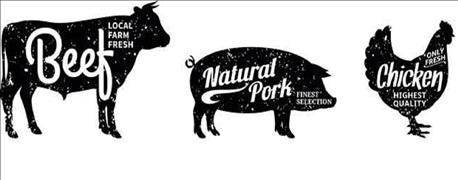
US chicken consumption continues climbing, with 2016 levels surpassing those from the previous two years.
In a survey commissioned by the National Chicken Council (NCC) and conducted online by ORC International showed 87% of consumers ate a chicken meal or snack purchased from a supermarket, and 72% ate a chicken meal or snack from a food service establishment in early June.
While supermarket numbers increased 2.4% and are now at parity with those seen in 2015, food service establishment consumption showed a noteworthy 7.5% increase from 2015.

A new survey says consumers are eating more chicken and plan to keep eating more chicken.
In addition, consumers said they plan to eat more chicken: In the next 12 months, 21% of consumers anticipate eating more chicken from the supermarket and 14% anticipate eating more from a food service establishment.
USDA estimates Americans will eat 92 pounds of chicken per person this year, a record amount.
In fact, the three major animal protein industries all will produce more meat this year than in 2015, with beef producing the largest gain, said economist Bill Helming recently in one of his subscriber newsletters.
Helming listed these increases for 2016, compared with 2015:
• Beef production -- up 4.6-4.8%
• Chicken production -- up 2.5-2.7%
• Pork production -- up 2.2-2.4%
Helming reminded his readers that these higher production levels also mean consumption must go up, so price will almost assuredly come down. He also noted it very likely consumer beef demand destruction occurred during 2012-2016 because of lower supplies and high prices.
"Many beef consumers have turned to buying and consuming more chicken and pork and less beef," Helming said. "The fact that average US worker wages have actually declined over the past eight years by 8% is a very real and significant factor contributing to the reduced consumer demand for beef over the past several years."
The survey by the Chicken Council also noted consumers with the highest chicken consumption levels tended to be younger, more affluent and ethnically diverse, with larger households.
Total chicken consumption by gender was equally divided 50% female and 50% male.
Consumers in the survey also were asked to rank various factors on satisfaction and in order of importance. Regardless of purchase channel, freshness, taste and price rose to the top. Across the board, consumers were satisfied with freshness and taste. However, consumer satisfaction with price differed by channel. Foodservice establishments experienced moderate satisfaction levels, while satisfaction with price at supermarkets was somewhat lower.
Further, consumers were asked if various claims would increase, decrease or have no impact on their likelihood to purchase their favorite chicken products.
Overall, when asked to choose among these claims, consumers were most interested in knowing that no antibiotics were used in production of their food.
As seen in last year's survey results, they also wanted to understand where chicken comes from, and products labeled as locally raised or indicating country of origin on the label were the claims most likely to pique interest.
When prompted, 71% of consumers were extremely or very concerned about food safety and 57% about hormone and steroid use, even though they are banned by federal law.
Only 19% of respondents were extremely or very concerned about the time it takes to raise a chicken.
About the Author(s)
You May Also Like




